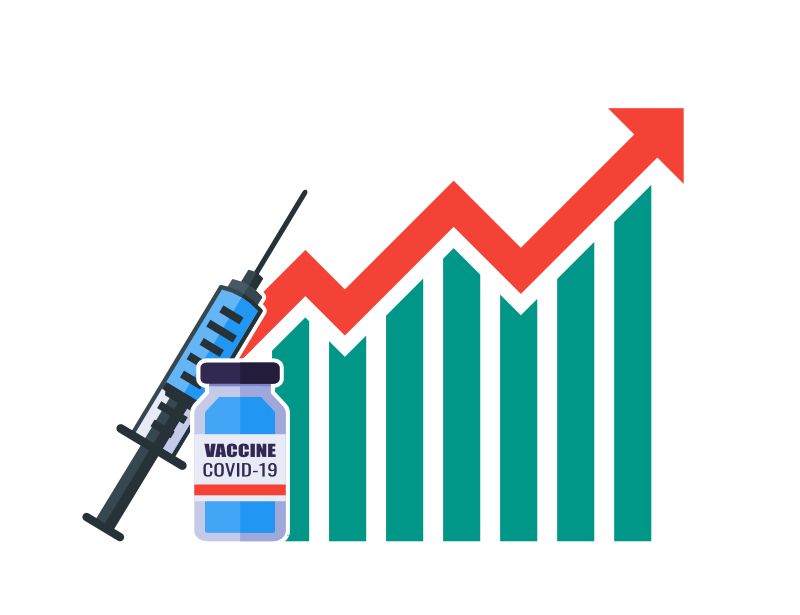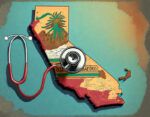How Imperial County Went from Lowest to Highest Vaccination Rates in the State – Lessons Learned? Lasting Impacts?
Throughout much of 2021 and all of 2022, Imperial County has held the best vaccination rates of all counties in California, even as it also accounts for the highest share of COVID fatalities per population. The county’s vaccination rates have bested those of wealthier regions, including Marin County, Santa Clara, San Mateo and San Francisco. Imperial County residents, by contrast, are low income and largely Latino. Imperial County also ranks second, after Marin County, in vaccinating kids – with 71 percent of children completing the primary series. Most counties in the rest of the state have vaccination rates below 40% of children ages 5-11.

What lessons can be learned from Imperial County’s success and can it sustain its momentum? Has its success resulted in permanent changes in health care access? Experts – Dr. Timothy Brewer, Professor of Epidemiology at the UCLA Fielding School of Public Health and of Medicine, and member of the Division of Infectious Diseases, the David Geffen School of Medicine, UCLA; Rosyo Ramirez, M.P.A., Deputy Director for Community Health Division at Imperial County Public Health Department; Luis Olmedo, Executive Director, Comite Civico Del Valle, Inc.; and Daniela Flores, MPH, Imperial Valley Equity & Justice Coalition – shared their views at a Vaccinate All 58 and Ethnic Media Services briefing, July 15.
Dr Timothy Brewer
“Imperial County is one of the highest vaccinated counties in the U.S. According to the CDC reports, vaccination rates are 95% in Imperial County, and 92% according to the Department of Public Health in California.
“The vaccines are very good at preventing serious disease, hospitalization, and death, less good at preventing infection because this virus changes as it replicates. If you’re unvaccinated you’re about five times more likely to become infected with COVID 19 than someone who’s been vaccinated and boosted; you’re about seven times more likely to end up in the hospital if you’re unvaccinated than someone who’s been vaccinated if you became infected with the COVID 19 virus; and you’re about eight times more likely to die than someone who’s not been vaccinated.
“Getting those vaccines and boosters out are incredibly important.
“There’s a lot of information out on the internet that people have access to, and unfortunately much of it is just wrong. For example, ‘if you get vaccinated it will cause your blood to congeal,’ – this is complete nonsense.
“I think a real challenge is trying to reach out to people, understand what their concerns are, and try to get them the appropriate information to address their concerns.”
“The six-month-to-five-year-olds were recently approved for vaccination by the FDA. We have a lot of systems in place for getting young kids vaccinated particularly before they go to school so now that both Moderna and Pfizer vaccine have been approved through emergency youth authorization for this age group, we’ll see those numbers start to rise.
“The five-to-17-year-olds are a little bit more of a challenge because that’s not a group that we routinely vaccinate as much as the younger kids, but hopefully as people recognize that this virus is still in our community, and it’s still being transmitted, they’ll see the importance and the benefits of both the original vaccines and the and the boosters,” said Dr Brewer.
“It’s been a collaborative effort and we’ve been saying this throughout the pandemic. Everything we’ve been through and how we’ve managed to get through every situation has been in collaboration and partnership with our local medical providers, local community-based organizations, with federal and state partners, and our regional partners as well.
“One of the first things we wanted to ensure is that we were all sending the same message, that we were all planning this together. There was that buy-in from the community and from the medical community of how things were going to roll out.
“We would focus on the gaps that were available in our community so that if we had to plan any clinics or targeted efforts, it was based on where those gaps were, and not duplicate efforts.
“We started with a drive-through clinics, and then went to the hospitals, helped set up clinics, and then further over to schools, to working with farm labor groups, working at wherever we could. Wherever agencies could, they would set up shop to make the vaccine accessible within the community. We also worked with an immunization communications ad hoc committee that focused efforts working with community-based organizations that have targeted efforts,” said Ramirez.
The grassroots campaign approach by Daniela Flores and Luis Flores, co-organizers of the Imperial Valley Equity and Justice Coalition – “I want to suggest that part of our high rates of primary serious vaccination has to do with politics, and the intersection between politics and race. By the start of 2022, political ideology was the strongest predictor of vaccination status rather than race, and ethnicity alone was a stronger predictor. The relatively low proportion of white conservatives in Imperial County as compared to other counties place a less appreciative role in our high rate of vaccinations,” said Luis.
“When vaccinations first started, Latinos across the country lagged significantly behind the White population. But between July and September of 2021, the rate of vaccinated Latinos jumped from 61% to 73%. Politics seemed to be a strong predictor with a gallup survey in late 2020 and in late 2021, finding that 92 percent of eligible Democrats had received at least one vaccine while only 56 percent of registered Republicans had.
“By the start of 2022, a largely wide anti-vaccine movement turned some of our expectations about vaccine access on its head about who would be getting some of these treatments. Imperial has by far the highest proportion of Latinos of any county in California, making up 86 percent of residents compared to the second highest 65 percent of Dulair County, a 20-point difference between one and two.
“Imperial County voters also overwhelmingly voted for Democrats in the 2020 election with 64% voting for Biden, 33% for Trump, and even this large voting gap doesn’t capture the politics of our non-voting resident and undocumented immigrant populations, notably Lassen and Modoc counties named by a Cal Matter study, the ‘Trumpians’ of counties ranked dead last in the in primary shot vaccination rates. We can also look within Imperial County for some clues about this.
“A city-by-city breakdown of vaccines in May of 2021 showed a similar puzzle – Calexico our most Latino but also most disadvantaged large city was keeping up with vaccinations and was ahead slightly ahead in proportion when compared to the county state of El Centro and to higher resource cities like Imperial in Brawley which also house our county’s pockets of conservative persons. The town of Imperial and Hotel for example were centers of small anti-masking mandate movements in early 2022,” said Luis, celebrating the successes of the county-wide efforts.
“While Imperial is ranked 1 out of 58 counties in the rate of primary series vaccinations meaning that full vaccination without a booster, we rank 49 out of 58 counties when we look at the rate of eligible boosted population at 47.5%. This tells us that something about that initial year of vaccinations went very well and that might not be carrying on to the booster efforts.
“In the first year, in the early months of vaccine roll out, our coalition focused on addressing important gaps to reaching some of the most vulnerable communities like Spanish-speaking communities, older adults, and agricultural workers. Farm workers face many barriers to vaccinations – lack of routine access to health care or limited familiarity with health care system; challenges with technology to access appointments, transportation; distrust of government; folks not having an email for appointment reminders and confirmations – these were all too common.
“To address this gap, we began to work with health care providers, pharmacies, hospitals, and community clinics to secure vaccine appointments for these groups that were hardest to reach. We also conducted extensive in-person outreach and vaccine pop-ups in downtown Calexico where thousands of Mexicali-based farm workers cross for work daily. For the hardest to reach, the necessity of boosters continues to pose major barriers. Farm workers did not have reliable phone numbers. They moved seasonally and worked during clinic hours.
“Low booster rate means that we can’t move beyond COVID. Imperial County has the test positivity of 40.2 percent, nearly one out of every two people testing positive. Trusted underground CBOs were essential to early vaccination efforts and they need to continue to play a central roll in booster campaigns,” said Daniela.


